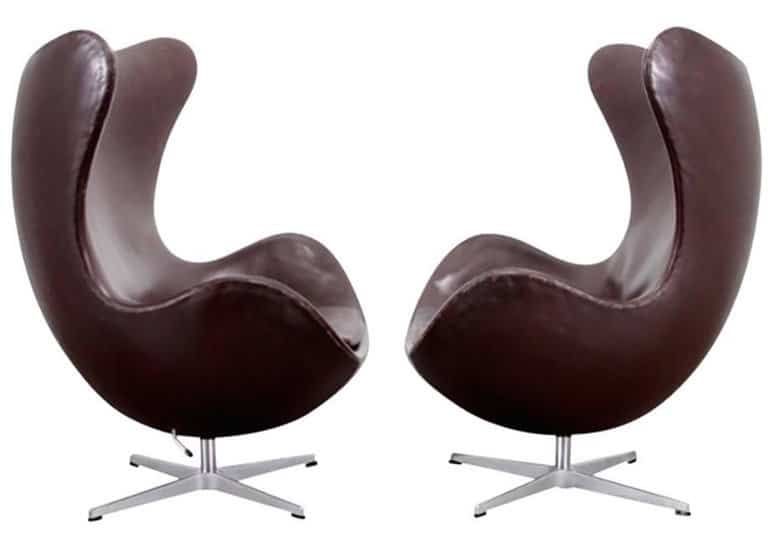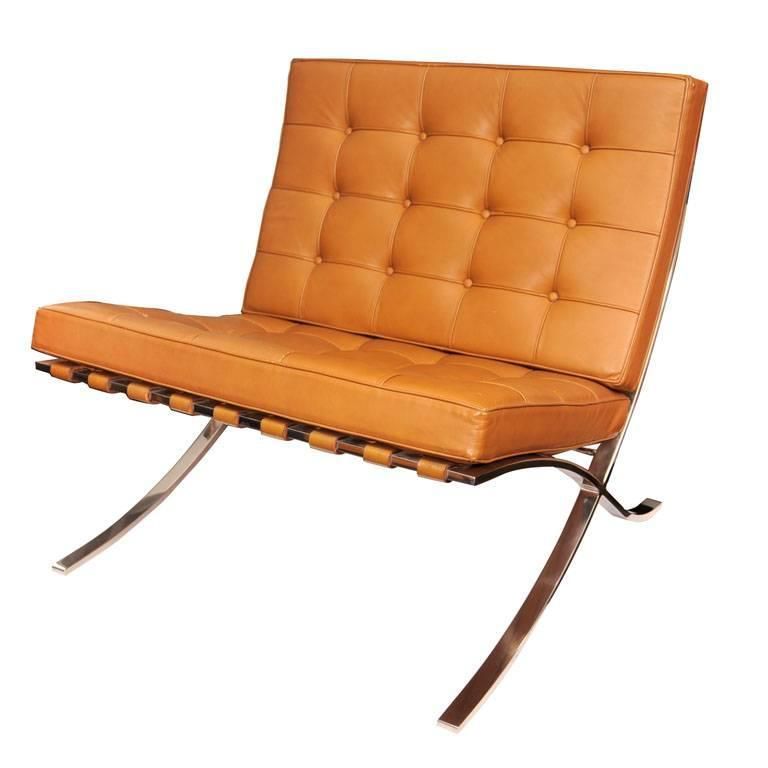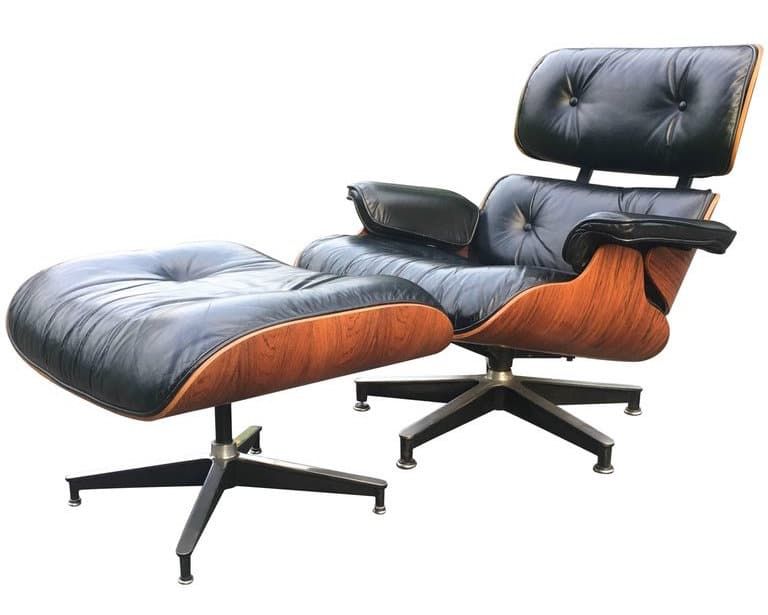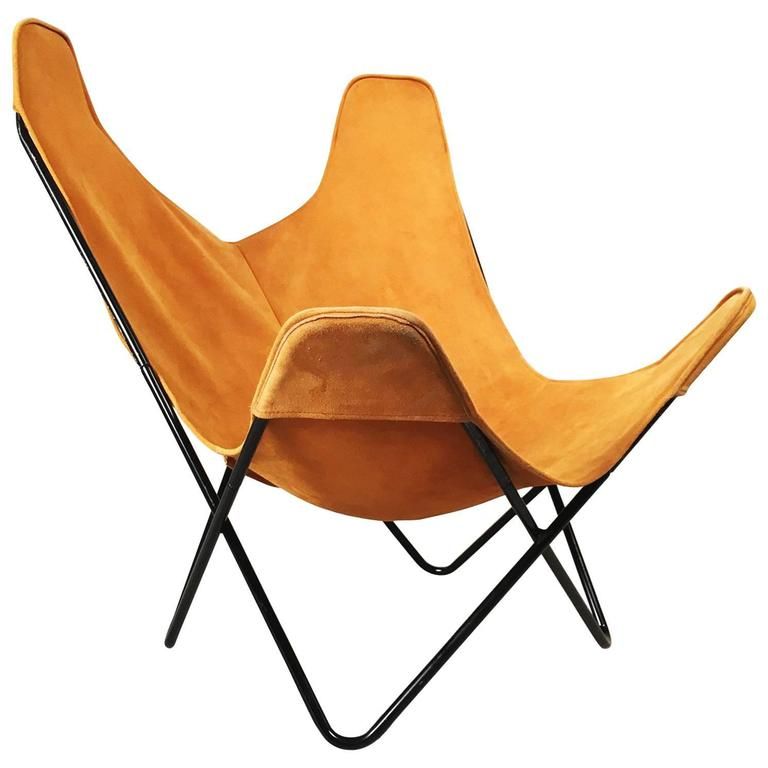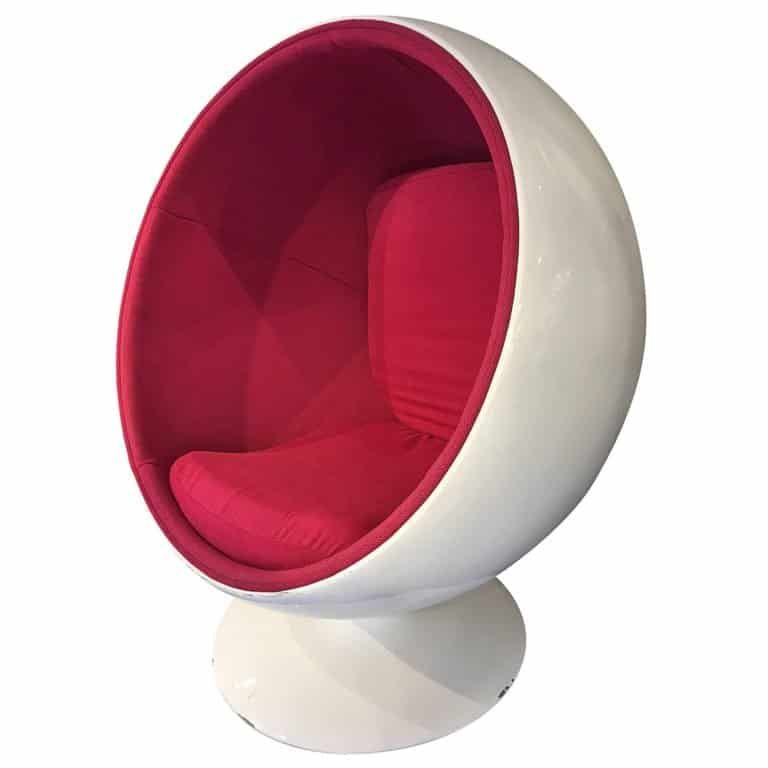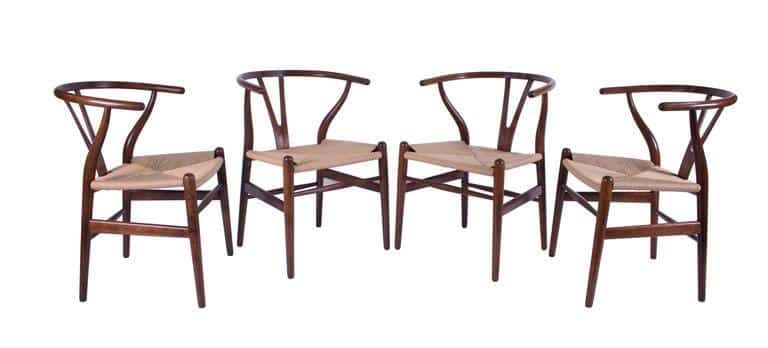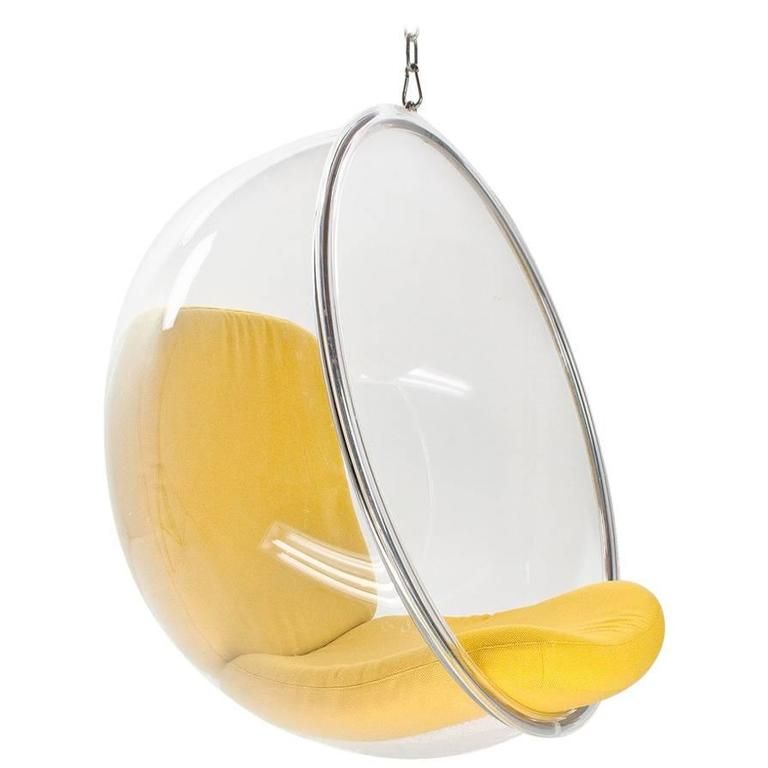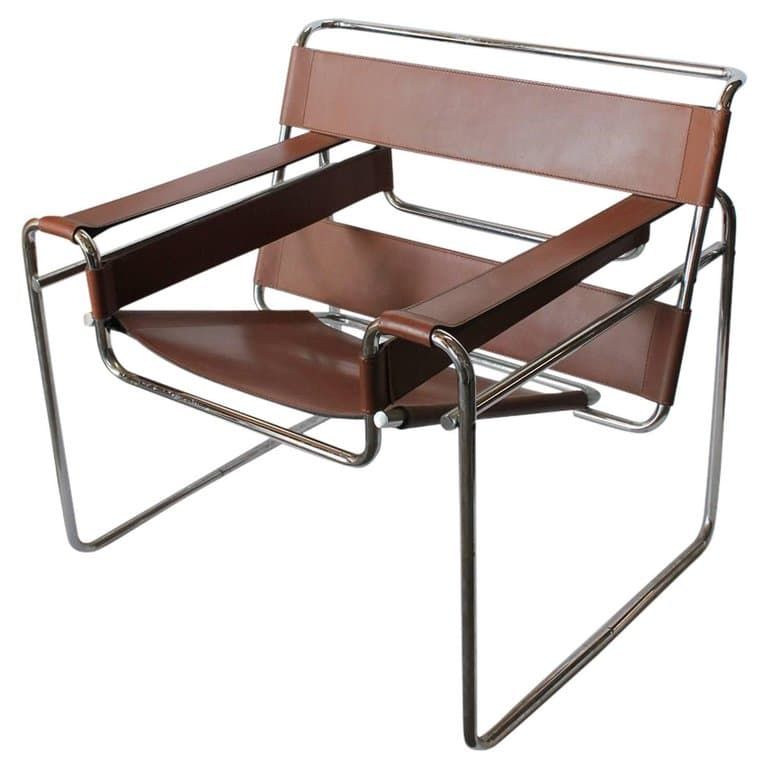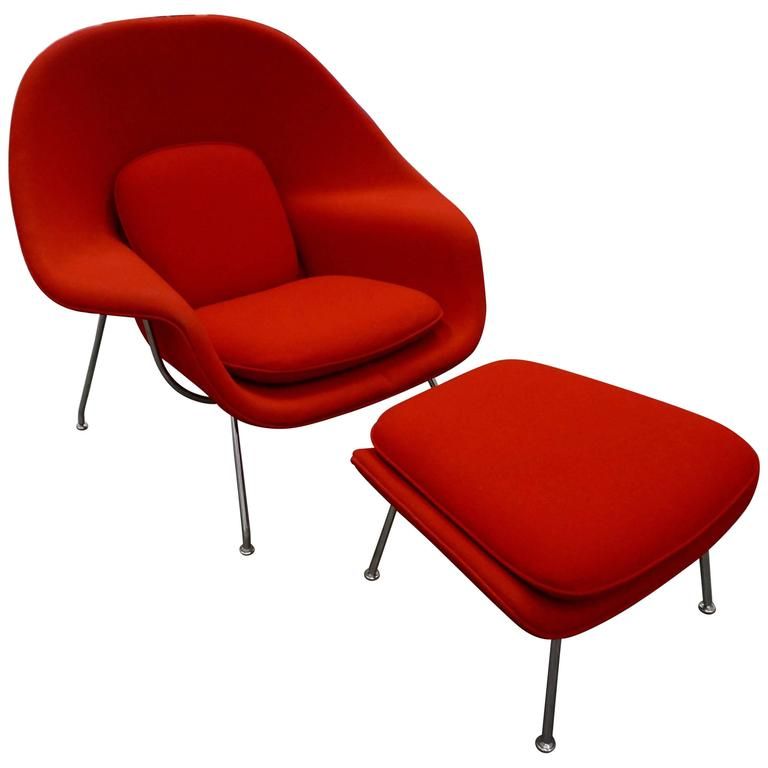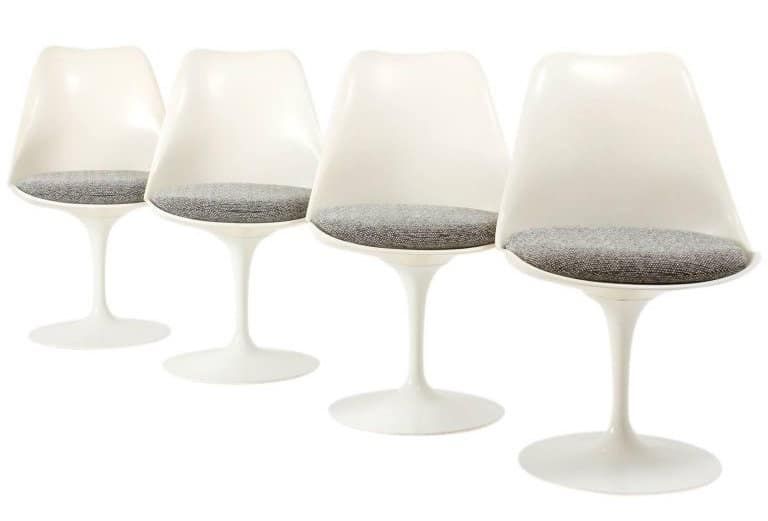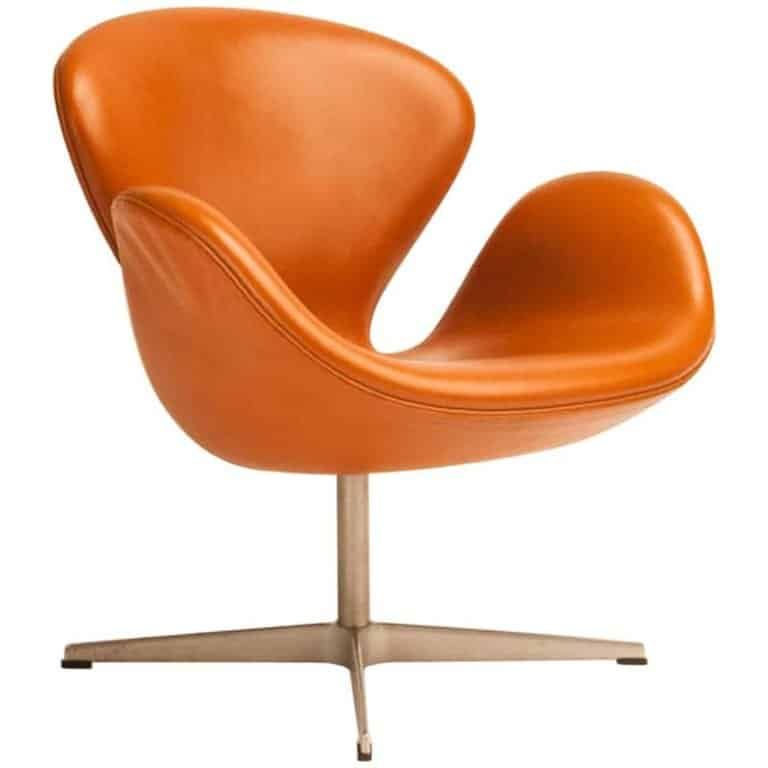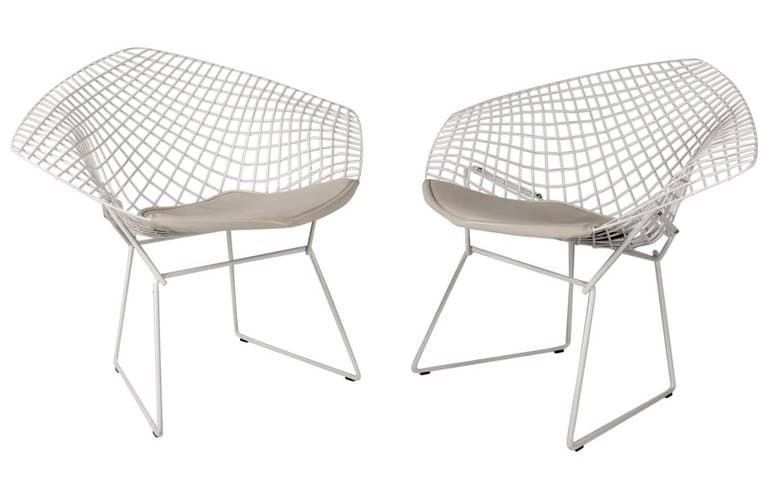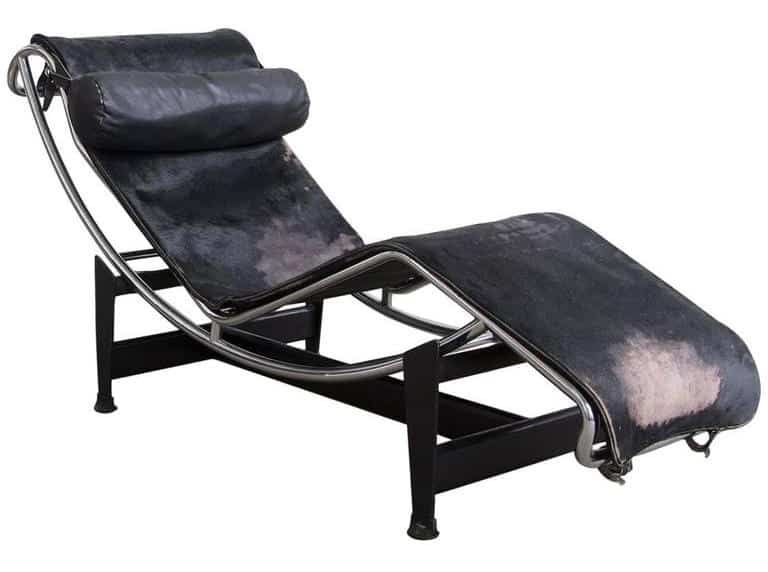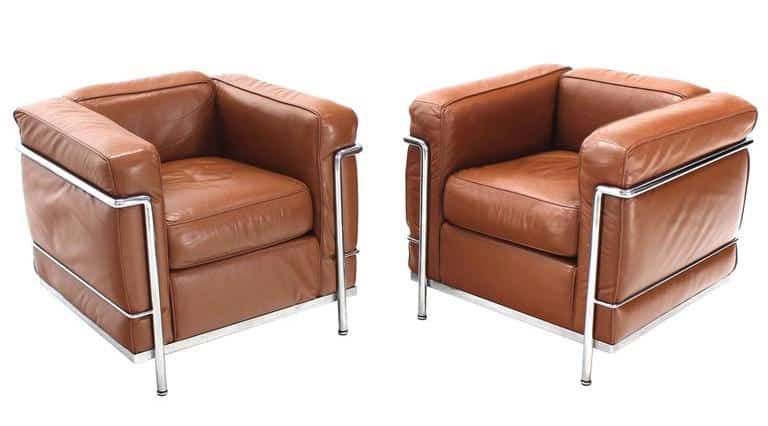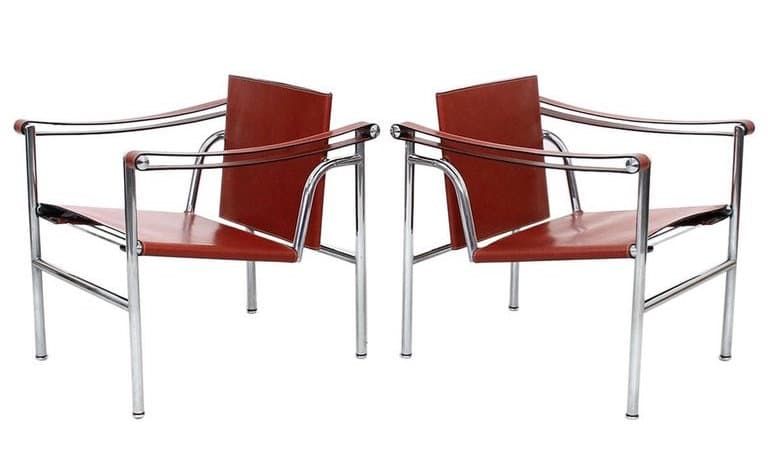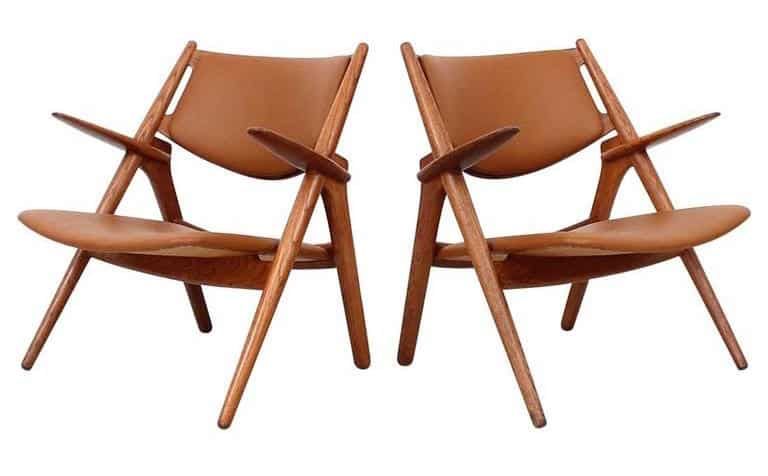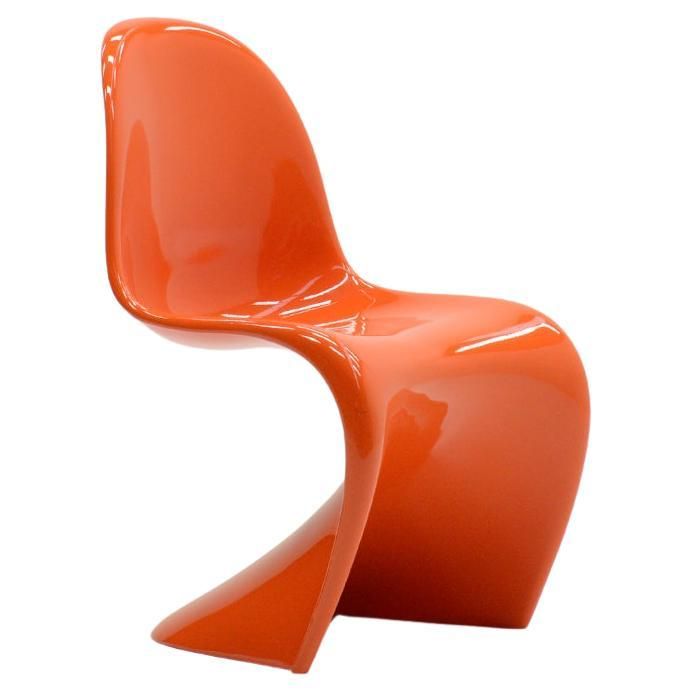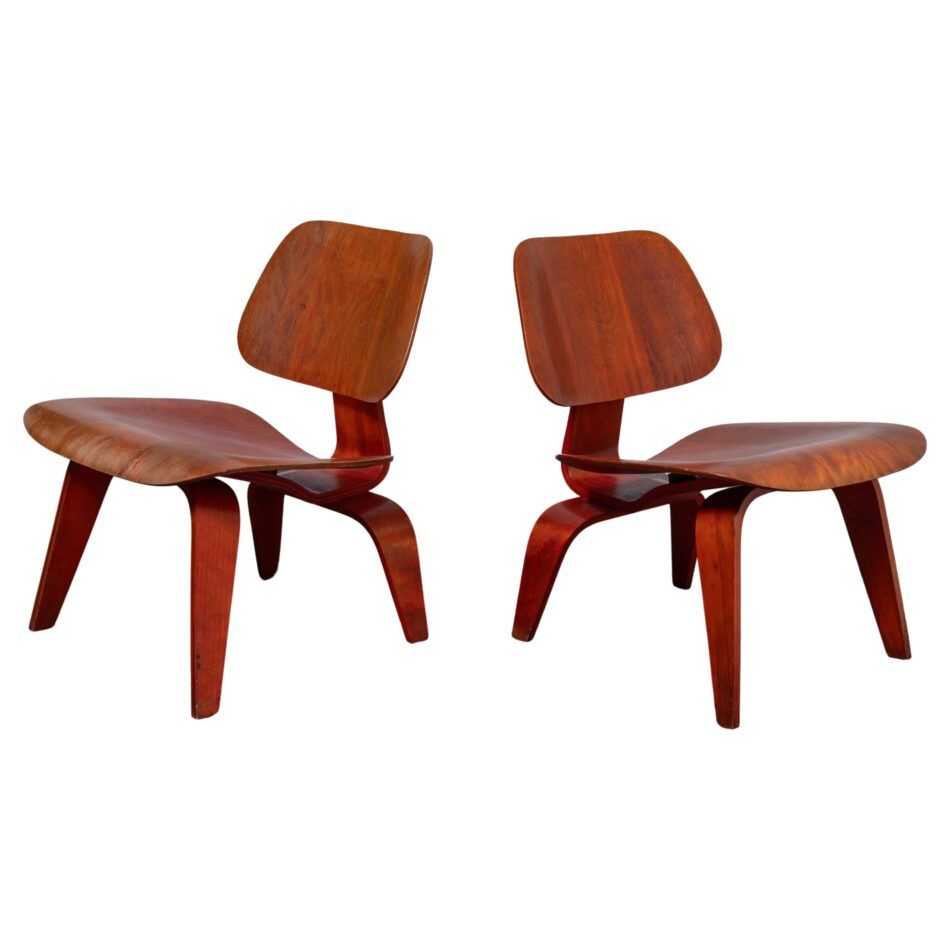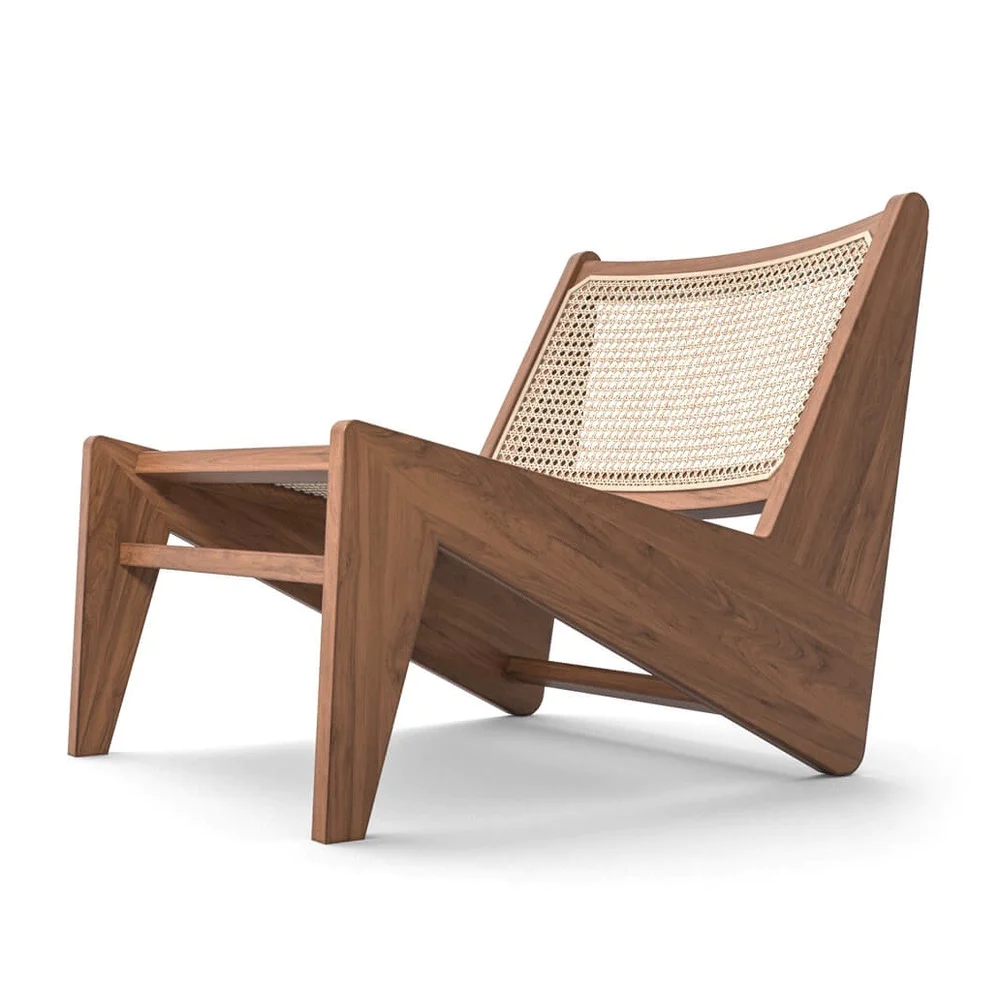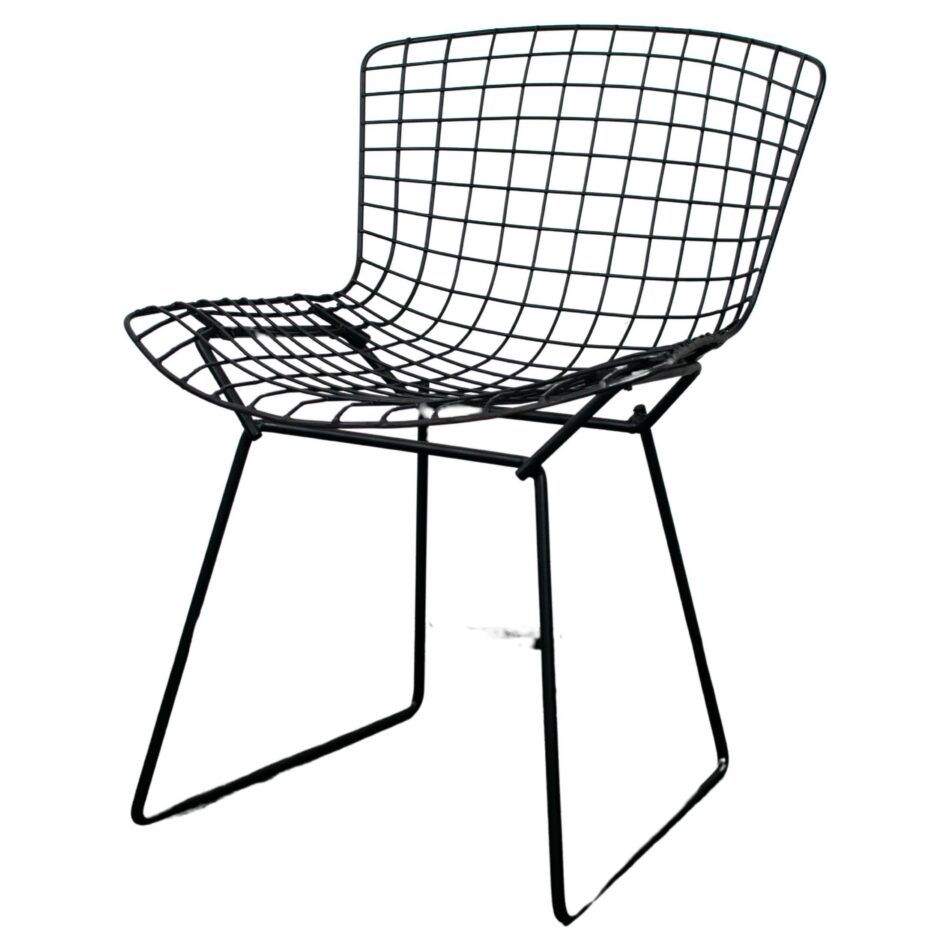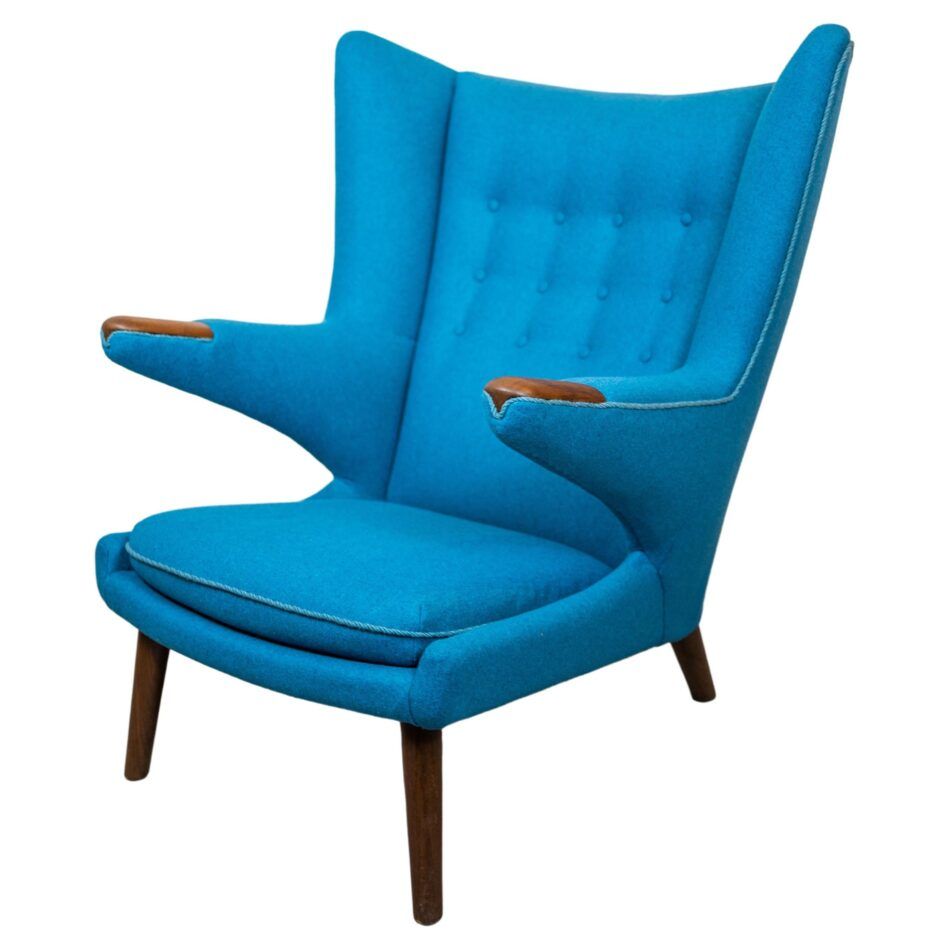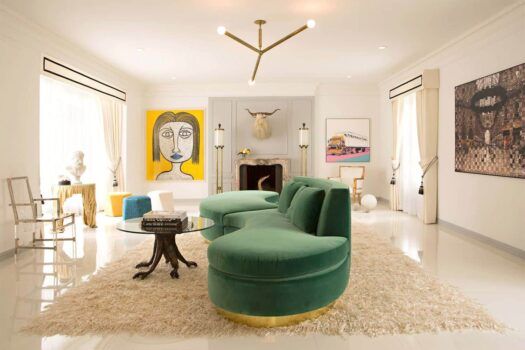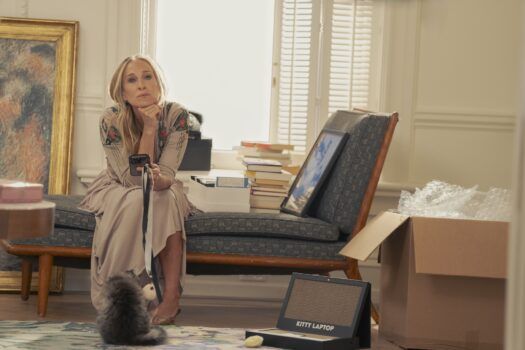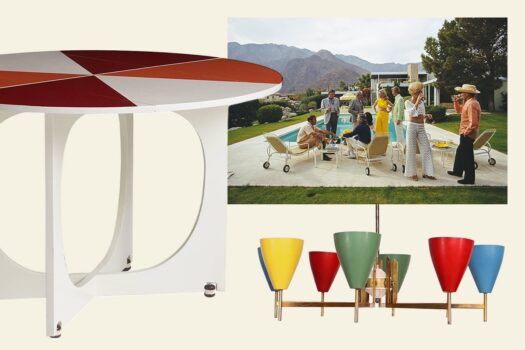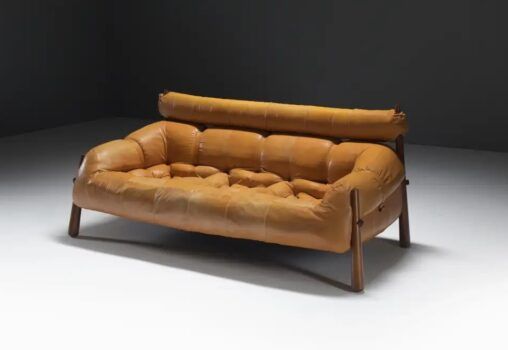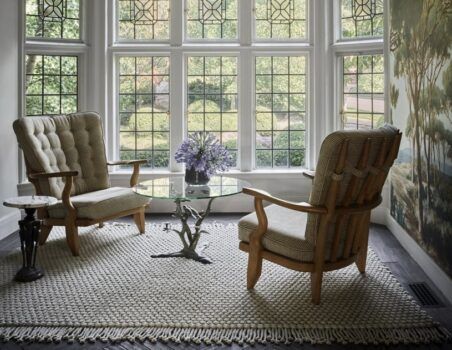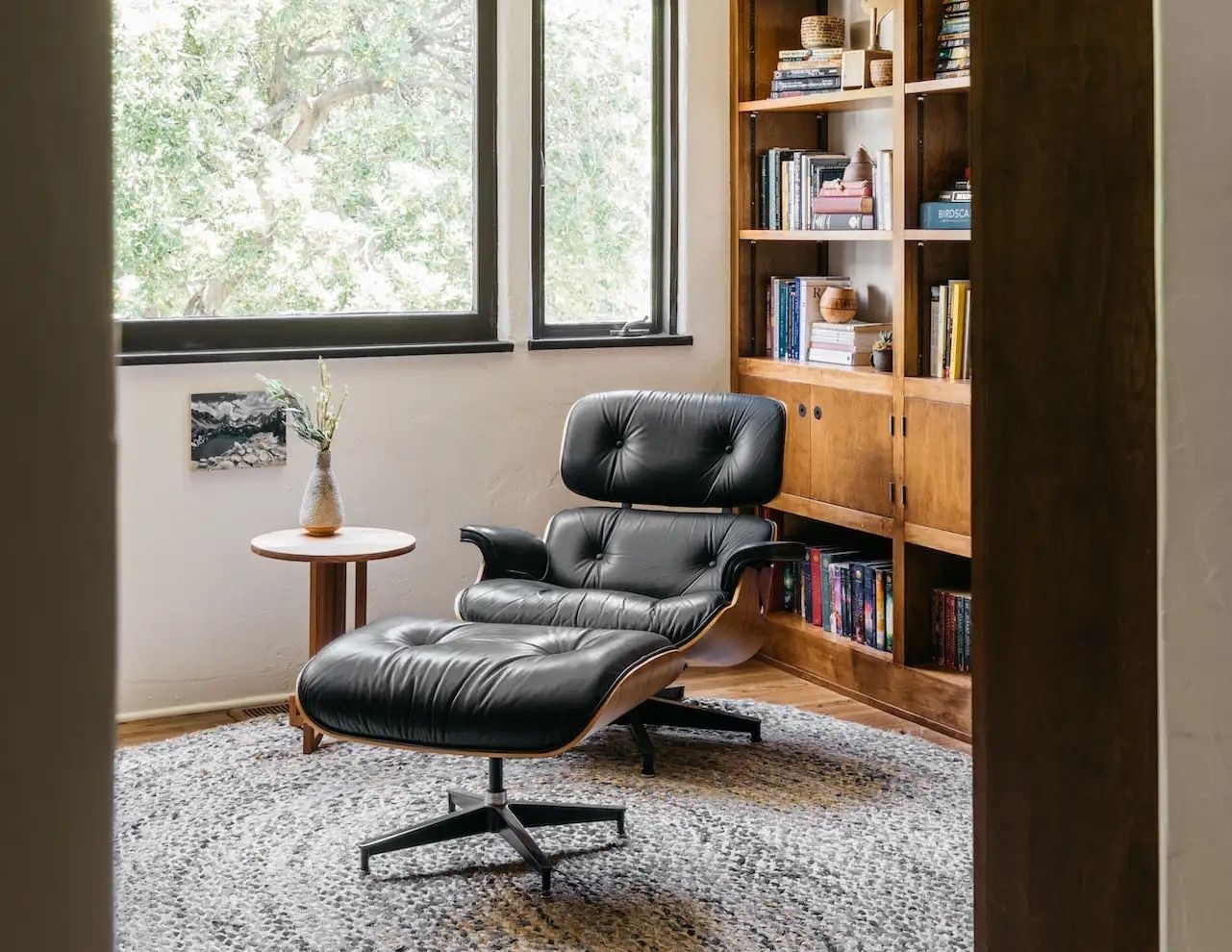
From the sleek seats of Charles and Ray Eames to the curvy creations of Eero Saarinen, each of the mid-century modern chairs in our curated list tells a story of innovation.
Whether you’re a design enthusiast, a homeowner seeking inspiration or simply fascinated by the evolution of modern furniture, this collection (presented in no particular order) showcases chairs that have become enduring symbols of mid-20th-century design.
1. Egg Chair by Arne Jacobsen
Of all Arne Jacobsen’s iconic designs, none is more famous or coveted than his 1958 Egg chair, which he conceived as part of his great opus, the SAS Royal Hotel complex. A chair “should not only work well as a work of sculpture,” he once quipped, “but it should also be a flattering background when someone is in it, especially a female occupant.” Jacobsen was a true master of the enduring mid-century modern furniture style, but “woke” he was not.
His curvaceous Egg chair is a pinnacle of sophistication and an exemplar of meticulous craftsmanship. Its silhouette nods to the classic wingback chair and reflects the broader mid-century modern design principle of combining art, function and ergonomics. The use of high-quality materials like supple leather and soft, sensuous fabric contributes to its enduring appeal and status as a peerless piece of furniture.
2. Barcelona Chair by Ludwig Mies van der Rohe and Lilly Reich
In the past, and sometimes even now, women have not always received the credit owed to them for their design chops. The Barcelona chair, attributed to the great modernist master Ludwig Mies van der Rohe, was designed not by him alone but in association with his close collaborator Lilly Reich.
We don’t know how much Reich contributed to the chair’s concept. But we can say that it was designed for the German Pavilion at the International Exposition of 1929 in Barcelona. And Mies van der Rohe used it to furnish his early modernist masterpiece Villa Tugendhat, in the Czech city of Brno.
3. 670 Lounge Chair by Charles and Ray Eames
Charles and Ray Eames weren’t just modernists — they were American modernists. They always found a way to inject a bit of folksy warmth into their sleek industrial designs. What inspired their classic, super-sculptural and incredibly comfortable 670 lounge chair? A well-worn first baseman’s mitt!
Part of the duo’s iconic Eames lounge chair and ottoman set, the model 670 was a departure from traditional seating and conventional materials. The designers experimented with innovative manufacturing techniques for the piece, utilizing molded plywood and leather to create a harmonious fusion of form and function. (More on Eamses’ plywood discoveries below, in the LCW chair section.)
This groundbreaking approach not only revolutionized how materials were used in modern furniture but made the chair a pop culture star, featuring prominently in movies and television, from James Bond to Gossip Girl.
4. Butterfly Chair by Jorge Ferrari Hardoy, Antonio Bonet and Juan Kurchan
The fabled Butterfly chair was designed in 1938 by a talented triumvirate of architects — the Catalan Antonio Bonet and Argentineans Juan Kurchan and Jorge Ferrari-Hardoy — who met when they were assistants in the Paris office of Le Corbusier.
Conceived as a contemporary take on French campaign furniture, the piece was created for an apartment building the three designed in Buenos Aires. They showed it at the third Salón de Artistas Decoradores, which was held in the Argentine capital two years later.
New York’s Museum of Modern Art discovered the Butterfly chair through that exhibition and requested three pre-production models, one of which went into its permanent design collection and another to the family home of MoMA’s design director at the time, Edgar Kaufmann — which happened to be Frank Lloyd Wright’s masterpiece Fallingwater.
As for the third, no one knows for sure what happened to it. But the Butterfly has since become one of the most popular mid-century modern chairs as well as an oft-imitated classic.
5. Ball Chair by Eero Aarnio
When Finnish designer Eero Aarnio moved into his first house, in 1962, he had no proper armchair for his new space, so he decided to make one. After sketching possible designs, he decided to simplify the shape to the point that it became a ball.
To determine the right dimensions for the spherical seat, he pinned a life-size drawing of it to the wall and “sat” in it while his wife outlined the position of his head on the paper. A true DIYer, Aarnio fashioned the first Ball chair prototype implementing the plywood-molding technique used to create glider fuselages. He laminated the surface with fiberglass, upholstered the interior and added a pedestal.
After two years of trying — and failing — to drum up interest in the design, Aarnio pitched it to his former employer, Asko, a well-known Finnish furniture manufacturer. Asko debuted the Ball chair at the Cologne International Furniture Fair in 1966, and the very first visitors, two Italians, placed an order on the spot for six.
By the end of the week, furniture purveyors from 30 countries had put in orders for Ball chairs, and Aarnio had achieved international renown. The design is found today in museum collections around the world and has appeared in magazines, music videos and movies, including Men in Black.
6. Wishbone Chair by Hans Wegner
Hans Wegner was a Danish exponent of the mid-century school of Organic Functionality. The Wishbone (or CH24) chair was part of a series Wegner designed for Carl Hansen & Søn in 1949, drawing inspiration from portraits of Danish merchants seated on Ming dynasty chairs, which were prized for their impeccable craftsmanship and high-quality materials.
The Wishbone chair got its name from its Y-shaped back, a minimalist departure from the heavy, rigid dining chairs that were in fashion at the time. With its meticulously crafted solid-beechwood frame and hand-woven paper-cord seat, the Wishbone is elegant, comfortable and highly versatile, at home anywhere and enriching spaces with its graceful, organic lines.
Carl Hansen has kept the model in continuous production since 1950, a testament to its timeless appeal.
7. Bubble Chair by Eero Aarnio
After the success of his Ball chair, Eero Aarnio took the notion of hemispheric seating one step further. “I wanted to have light inside it,” said Aarnio, who decided the only suitable material for this was transparent molded acrylic, considered high-tech in 1968.
The Bubble chair was revolutionary — a space-age seat subverting conventional norms and marking a significant stride in modern furniture design. The Bubble’s transparent spherical form showcased Aarnio’s commitment to avant-garde design and introduced an airiness to modern interiors.
Suspended from a stainless-steel chain — because, as the designer noted, “there is no nice way to make a clear pedestal” — it invites sitters to experience a moment of self-contained weightlessness, shielded from the sounds of the outside world.
8. Wassily Chair by Marcel Breuer
Hungarian-born modernist Marcel Breuer designed the Wassily chair in 1925, when he was just 23 and already an instructor at the Bauhaus. One of the earliest students at the ultraprogressive design school and its youngest, his gifts were so immense that after a year, Walter Gropius, the Bauhaus’s founder, put him in charge of the carpentry shop.
Inspired by the tubular steel used for bicycle handlebars, Breuer originally designed the chair for himself. Wassily Kandinsky, one of his colleagues at the Bauhaus, greatly admired the piece, so Breuer made one for him. When the chair was rereleased, in the 1960s, it was named after the famous abstract painter, its earliest fan.
9. Womb Chair by Eero Saarinen
Many design aficionados will tell you the Womb chair is the most comfortable chair in the world. That indeed was Eero Saarinen’s intention when he designed it in 1948 at the request of Florence Knoll, a formidable designer herself, who desired a modern armchair that one could curl up in like it was “a basket full of pillows.”
Other lounge chairs of the time conformed to the way women were expected to sit — with a straight back and crossed ankles. But Knoll wanted to sit sideways or curled up as if in the womb (hence, the chair’s name).
Its enveloping form is like a protective cocoon, with plush upholstery and a roomy form that supports countless positions and aligns with Saarinen’s belief that good design enhances the emotional well-being of its users. The Womb chair embodies his commitment to designing furniture that resonates with the human experience.
10. Tulip Chair by Eero Saarinen
Saarinen, like many mid-century modernists, considered the postwar world ugly, confusing and unrestful, so he conceived the Pedestal collection in 1957 as an antidote. With a form resembling its botanical namesake, the Tulip chair has a seat molded top to bottom from fiberglass, in line with Saarinen’s design concept of “one piece, one material.” Although the enameled-aluminum base is separate, the chair appears monolithic.
The graceful pedestal that replaces traditional chair legs enhances the chair’s silhouette and helps realize Saarinen’s objective for the Pedestal collection: to “clear up the slum of legs” under chairs and tables.
Visually pure and timeless, the collection includes chairs, tables, armchairs and stools that transcend the chaos of their postwar origins to stand as early examples of minimalist design principles. In a single, cleverly conceived piece, Saarinen achieved a harmonious balance that continues to resonate with admirers of mid-century modernism.
11. Swan Chair by Arne Jacobsen
Arne Jacobsen designed the Swan chair and Swan settee as part of his 1958 commission for the SAS Royal Hotel complex in Copenhagen, which also produced the Egg and Drop chairs. It’s hard to imagine a sleeker and more elegant seat — and it’s hard to believe that Jacobsen assembled its prototype in his garage!
This humble beginning contrasts with the iconic chair’s regal presence in a room, producing an intriguing juxtaposition. The chair has achieved such a level of popularity that to celebrate the launch of his fabric pattern Point, in 2011, fashion designer Paul Smith covered a Swan chair in it.
12. Diamond Chair by Harry Bertoia
Viewing the Diamond chair, it should come as no surprise that Harry Bertoia was a sculptor. In fact, the success of his wire furniture collection for Knoll, to which this piece belongs, enabled Bertoia to pursue a career in art. The chair is so iconic that it’s easy to forget how avant-garde it was when it debuted, in 1952.
“If you look at these chairs,” Bertoia noted, “they are mainly made of air, like sculpture. Space passes right through them.” Remarkably, the lofty seats are also immensely comfortable!
13. LC4 by Le Corbusier, Pierre Jeanneret and Charlotte Perriand
Although the LC4 lounge is usually associated with Le Corbusier, he did not design it alone. It was the result of a team effort, produced for the 1929 Salon d’Automne with two other gifted furniture designers in Le Corbusier’s atelier: his cousin Pierre Jeanneret and Charlotte Perriand.
The piece is part of the trio’s LC Series, which was conceived with an eye to functionality and features chairs constructed from tubular chromed steel.
One of the earliest examples of industrial-style furniture, the LC4 was originally known as the “resting machine.” At the time, it was nothing short of revolutionary: The adjusting reclining mechanism provides users with a customizable lounging experience — an innovation that laid the groundwork for modern ergonomic furniture design.

14. LC2 and LC3 by Le Corbusier, Pierre Jeanneret and Charlotte Perriand
Designed like the LC4 for the 1929 Salon d’Automne, the LC3 was an attempt by Le Corbusier, Jeanneret and Perriand to interpret a richly cushioned armchair in an industrial vernacular. Considering the ubiquity of the seat, which they dubbed “le grand confort,” their bold effort was a resounding success.
The LC2 armchair is a more compact version of the LC3, earning the sobriquet “le petit confort.” Featuring an elevated backrest and constructed with the steel frame on the outside of the body, both models encapsulate the design trio’s commitment to blending comfort with functional design and highlight the designers’ ability to harmonize the luxurious with the utilitarian.
15. LC1 by Le Corbusier, Pierre Jeanneret and Charlotte Perriand
Attempting to reinvent the armchair, the three designers stripped away the standard cushioning and trim, distilling it down to its Platonic essence. The result was the LC1, which despite its minimalist, sculptural construction, offers maximum comfort, thanks to its adjustable backrest and steel springs that stabilize the chair.
One can only imagine how radical this assemblage of hide and steel must have seemed to those still deeply ensconced in the padded splendor of the Belle Époque! Blending these materials, however, was not just a stylistic choice but a nod to durability and elegance.
16. Sawbuck Chair by Hans Wegner
Hans Wegner was more than a brilliant designer — he had the kind of affinity for wood that only the greatest cabinetmakers possess. Wegner created many popular mid-century modern chairs and considered chair-making a form of sculpture. “A chair is to have no backside,” he once observed. “It should be beautiful from all sides and angles.”
That’s certainly the case with the simple Sawbuck chair, which he conceived in 1952. Carved out of solid oak and walnut, it’s finished with a clear lacquer to highlight the contrast between the different woods.
17. Panton Chair by Verner Panton
Danish designer Verner Panton’s revolutionary Panton chair epitomizes the audacity of mid-century modern design. In fact, the S-shaped design was so audacious that Panton, in collaboration with Swiss furniture company Vitra, struggled from 1959 until 1967 with numerous technical hurdles before they managed to bring his vision to life.
Crafted from a single, flowing piece of molded plastic, the Panton chair represented a groundbreaking departure from conventional materials and construction. And along with that, it delivered unexpected comfort, by virtue of its cantilevered structure, anthropomorphic silhouette and flexible composition.
All of these innovations helped it become a 20th-century icon even as its creator continued to push the boundaries of furniture design into the 1970s and beyond.
18. LCW Chair by Charles and Ray Eames
In the 1940s, Charles and Ray Eames experimented with fabrication techniques that would leave an indelible mark on mid-century modern design.
Their state-of-the-art work in molded plywood evolved over time — a very long time. “Yes, it was a flash of inspiration — a kind of 30-year flash,” Charles Eames once said, describing the arduous development of the pair’s iconic LCW chairs.
But the Eameses’ determination paid off when their LCW (Lounge Chair Wood) was named “Design of the Century” by Time. The magazine’s 1999 end-of-the-century issue stated that Ray and Charles “Eames took technology created to meet a wartime need (for splints) and used it to make something elegant, light and comfortable. Much copied but never bettered.”
19. Easy Chair by Pierre Jeanneret
Pierre Jeanneret designed his Easy chair, model PJ-SI-29-A, in the early 1950s as part of an urban-planning project for the experimental Indian city of Chandigarh. The idea was to create a simple, modern chair that was easy to mass-produce, since it would be standard issue for use in government offices, libraries and other buildings throughout the provincial capital.
With its modular structure requiring no screws, the Easy chair had a significant impact on modern furniture design. Composed of an angular teak frame with V-shaped legs and a square seat and back finished with rattan webbing, the practical, functional piece offers much comfort.
Since Jeanneret chose not to patent or copyright the design, it has been widely replicated and adapted and continues to furnish residential and commercial spaces to this day.
20. Bertoia Side Chair by Harry Bertoia
Harry Bertoia was a polymath of the creative realm. “Bertoia’s paintings were better than his sculptures. And his sculptures were better than his furniture. And his furniture was absolutely brilliant,” Knoll historian Brian Lutz has said.
Known for taking an open-minded approach at their eponymous modernist furniture company, Hans and Florence Knoll allowed Bertoia unrestricted freedom to explore his creative instincts. In return, they simply urged him to share anything interesting he discovered along the way.
A fruit of this freedom was Bertoia’s iconic wire-form furniture collection (see the Diamond chair above), introduced in 1952 and including the wire-form masterpiece known as the Bertoia side chair.
21. Papa Bear Chair by Hans Wegner
Hans Wegner’s wingback Papa Bear chair spotlights the Danish designer’s unparalleled craftsmanship and mastery of form. Inspired by the way bears embrace their young, Wegner aimed to create a sophisticated seat that offered a warm, comforting embrace.
Introduced in 1951, the Papa Bear exemplifies Wegner’s meticulous attention to detail. The armchair’s distinctive high-backed design, plushly upholstered solid-wood frame and prominent armrests contribute to its inviting and quintessentially Scandinavian modern appearance.
